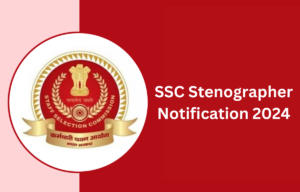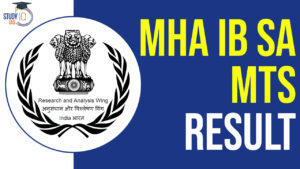Daily Current Affairs for UPSC 2023
Q) Which one of the following statements is not correct with respect to AT-1 bonds?
- AT-1 bonds are a type of perpetual debt instrument.
- They are typically used by banks to increase their core capital.
- Banks can stop paying interest on them.
- They are regulated by the Securities and Exchange Board of India.
Daily Current Affairs for UPSC – 6 March 2023
Explanation:
- Option (1) is correct: AT1 bonds are a type of perpetual debt instrumentwith no maturity date. The issuer possesses the call option that permits them to redeem these bonds after a certain period. AT1 bonds are subordinate to all other debt and only senior to common equity.
- Option (2) is correct: The Supreme Court of India has put on hold the order quashing the write-off of a renowned bank’s AT1 Bonds. These bonds are typically used by banks to bolster their core or tier-1 capital.
- Option (3) is correct but option (d) is incorrect: AT1 bonds are considered high risk because, in case of an institutional failure, the banks are allowed to stop paying interest. If needed, the banks can also write off these bonds. When the issuer crosses the point of non-viability, AT1 bonds are the first part of the debt that will be written off. AT-1 bonds are regulated by the Reserve Bank of India (RBI).
Q) Consider the following statements about the UN high seas treaty:
- It is a non-legally binding treaty which ensures the sustainable use of ocean biodiversity.
- Deep-sea mining and fishing will be restricted under this treaty.
- It will help conserve 30 percent of the world’s oceans by the year 2050.
Which of the statements given above is/are correct?
- 1 and 2 only
- 2 only
- 1 and 3 only
- 1, 2 and 3
Explanation:
- Statement 1 and 3 are incorrect: UN high seas treaty is a legally binding agreement to conserve and ensure the sustainable use of ocean biodiversity. It is a first ever treaty to protect the world’s oceans that lie outside national boundaries. It is seen as a crucial component in the “30 by 30” targets agreed in Montreal, Canada, in December 2022. “30 by 30” is a global effort to bring 30 per cent of the world’s land and sea under protection by 2030. According to Greenpeace Data, 11 million square km of the ocean must be protected annually until 2030 to meet this target.
- Statement 2 is correct: The treaty will help us achieve the goal of conserving or protecting at least 30% of the global ocean by 2030. It will try and regulate high seas activities like fishing, the routes of shipping lanes and deep-sea mining. It will lead to restrictions on deep sea mining and fishing. It will oblige countries to conduct environmental impact assessments of any proposed activities on the high seas. It will help reverse marine biodiversity losses and ensure sustainable development. United Nations member states have agreed on the first international treaty to protect the high seas. High seas are areas of oceans that lie beyond countries’ national waters (beyond 200 nautical miles). These are the largest habitat on Earth and are home to millions of species. High seas comprise more than 60 percent of the world’s oceans and nearly half the planet’s surface.
Q) With reference to migrant workers in India, consider the following statements:
- As per the 2011 census, the total number of internal migrants in India is about one-fifth of the country’s total population.
- The highest numbers of male migrant workers are employed in the construction sector.
- Both gig workers and platform workers are eligible to register on the e-Shram portal.
Which of the statements given above is/are correct?
- 1 and 2 only
- 2 and 3 only
- 1 and 3 only
- 3 only
Explanation:
- Statements 1 and 2 are incorrect:A migrant worker is a person who migrates within a home country or outside it to pursue work. Migrant workers usually do not have the intention to stay permanently in the country or region in which they work. In India, Migrant workers usually refer to those who engage in internal migration within the country, often for the purpose of seeking employment. Internal migration refers to the movement of people from one place to another within the same country. As per census 2011, the total number of internal migrants in India is 36 crore or 37% of the country’s population. The Economic Survey pegged the size of the migrant workforce at roughly 20 per cent or over 10 crore in 2016. Major origin states of internal migration are Uttar Pradesh, Bihar, Rajasthan, Madhya Pradesh, Jharkhand, and Odisha. Major destination states of internal migration are Maharashtra, Delhi, Gujarat, Tamil Nadu, Karnataka, and Punjab. The share of migrant workers is the highest in construction sector for females while highest number of male migrant workers are employed in public services (transport, postal, public administration services) and modern services (financial intermediation, real estate, renting, education, health).
- Statement 3 is correct: Ministry of Labour & Employment launched the eSHRAM portal for creating a National Database of Unorganized Workers (UWs) including construction workers, migrant workers, gig workers and platform workers, street vendors, domestic workers, agriculture workers, etc on 26thAugust 2021. The recent case of alleged assault on migrant workers in Tamil Nadu has once again brought attention to problems that migrant workers face in the country.
Q) Consider the following statements about the Controller General of Accounts (CGA):
- The CGA is a constitutional body appointed by the President of India.
- The CGA evaluates the financial performance of various schemes of the government ministries.
- Both the Annual Appropriation Accounts and Union Finance Accounts are submitted to Parliament on the advice of the Controller General of Accounts of India.
Which of the statements given above is/are not correct?
- 1 and 2 only
- 2 and 3 only
- 1 and 3 only
- 1, 2 and 3
Explanation:
- Statement 1 and 3 are incorrect:Controller General of Accounts (CGA), in the Department of Expenditure, Ministry of Finance, is the Principal Accounting Adviser to Government of India. Controller General of Accounts derives his/her mandate from Article 150 of the Constitution. This statutory mandate as incorporated in the Allocation of Business Rules 1961 brings out the duties and responsibilities. It is to be noted that the CGA is not a constitutional body. Its goal is to provide reliable information that brings transparency in the use and reporting of public funds through an integrated government-wide financial information system. The Annual Appropriation Accounts (Civil) and Union Finance Accounts are submitted to Parliament on the advice of Comptroller and Auditor General of India.
- Statement 2 is correct:Controller General of Accounts (CGA) performs the following functions:
- To formulate policies relating to general principles, form and procedure of accounting for the Central and State Governments.
- To administer the process of payments, receipts and accounting in Central Civil Ministries/ Departments.
- To prepare, consolidate and submit the monthly and annual accounts of the Central Government.
- To coordinate and assist in the introduction of Management Accounting Systems in Ministries/ Departments.
- To monitor financial performance and effectiveness of various programs, schemes and activities of the civil ministries.
- To administer banking arrangements for disbursements of Government expenditures and collection of government receipts and interacts with the Central Bank for reconciliation of cash balances of the Union Government.
Q) With reference to Non-Banking Financial Company(NBFC), consider the following statements:
- It is a company that is usually involved in the sale and purchase of immovable properties.
- NBFCs are part of the payment and settlement system but cannot issue cheques.
- The deposit insurance facility is not available to depositors of NBFCs.
Which of the statements given above is/are correct?
- 1 only
- 1 and 2 only
- 3 only
- 2 and 3 only
Explanation:
- Statement 1 is incorrect:An NBFC is a company registered under the Companies Act, 1956 engaged in the business of loans and advances, acquisition of shares/stocks/bonds/debentures/securities issued by Government or local authority or other marketable securities of a like nature, leasing, hire-purchase, insurance business, and chit business. It does not include any institution whose principal business is that of agriculture activity, industrial activity, purchase or sale of any goods (other than securities) or providing any services and sale/purchase/construction of an immovable property.
- Statement 2 is incorrect but statement 3 is correct:RBI has recently asked the banks and NBFCs to promote digital payments. RBI, under the RBI Act 1934 has the power to register, lay down policy, issue directions, inspect, regulate, supervise, and exercise surveillance over NBFCs that meet the 50-50 criteria of principal business. NBFC cannot accept demand deposits. NBFCs do not form part of the payment and settlement system and cannot issue cheques drawn on itself. The deposit insurance facility of Deposit Insurance and Credit Guarantee Corporation is not available to depositors of NBFCs.


 SSC Stenographer 2024 Notification Out a...
SSC Stenographer 2024 Notification Out a...
 IB SA MTS Final Result 2024 Out at mha.g...
IB SA MTS Final Result 2024 Out at mha.g...
 Model Skill Loan Scheme, Eligibility, Re...
Model Skill Loan Scheme, Eligibility, Re...

















